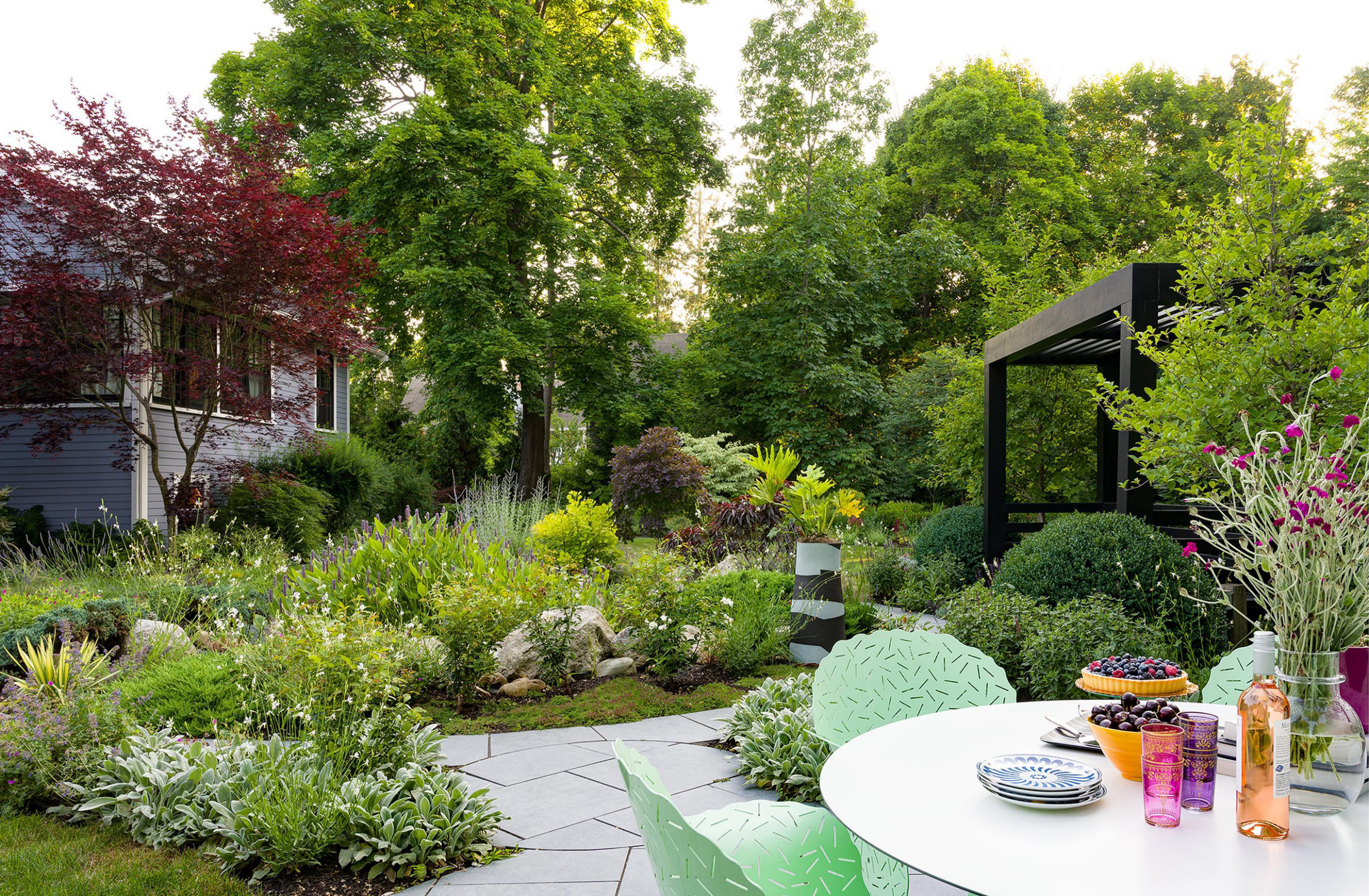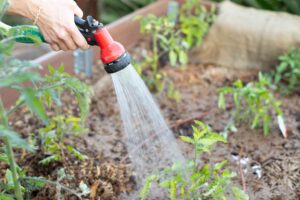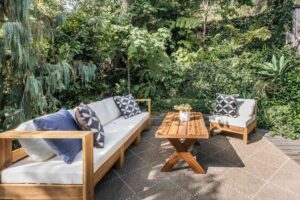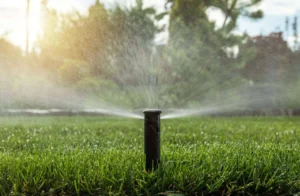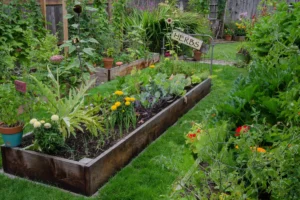Creating a Wildlife-Friendly Garden: A Complete Guide
In today’s rapidly urbanizing world, your garden can serve as a vital sanctuary for local wildlife. Creating a wildlife-friendly garden isn’t just beneficial for the environment—it can transform your outdoor space into a vibrant ecosystem that’s more beautiful, productive, and enjoyable. According to the U.S. Fish and Wildlife Service, habitat loss is one of the primary threats to native wildlife across America. Your backyard, no matter how small, can become part of the solution.
This comprehensive guide will walk you through everything you need to know to transform your outdoor space into a thriving habitat for birds, beneficial insects, pollinators, and other local fauna.
Understanding the Wildlife Garden Ecosystem
Why Wildlife Gardens Matter
Wildlife-friendly gardens serve multiple crucial functions in our ecosystem:
- They provide essential habitat for native species facing habitat loss
- They create biological corridors that allow wildlife to move between larger natural areas
- They support pollinator populations that are essential for food production
- They reduce the need for chemical interventions by fostering natural pest control
- They create opportunities for education and connection with nature
According to the National Wildlife Federation, American yards and gardens cover nearly 40 million acres—a massive potential habitat that can be restored to support biodiversity.
The Key Elements of Wildlife Gardens
To truly support local wildlife, your garden should provide four essential elements:
- Food sources – Native plants producing seeds, berries, nectar, and supporting insect populations
- Water features – Clean, accessible water for drinking and bathing
- Shelter – Places for wildlife to hide from predators and weather
- Nesting sites – Secure locations for raising young
These elements, when thoughtfully integrated, create a complete habitat system that supports the entire life cycle of various species.
Planning Your Wildlife Garden
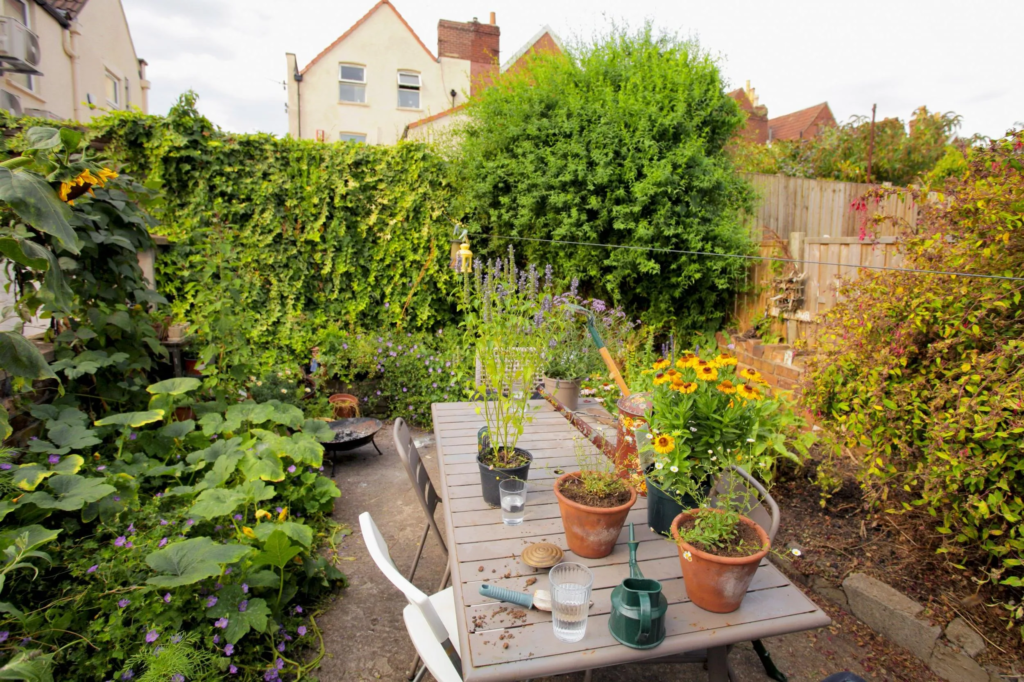
Assessing Your Space
Before diving into planting, take stock of your garden’s current conditions:
- Sun exposure – Map out the sunny, partial sun, and shady areas
- Soil type – Determine if you have clay, sandy, or loamy soil
- Moisture levels – Note areas that tend to be dry or retain water
- Existing vegetation – Catalog what’s already growing, especially native plants
- Hardscape elements – Consider how paths, patios, and structures affect wildlife
The U.S. Department of Agriculture Natural Resources Conservation Service offers free soil testing resources that can help you understand your garden’s specific conditions.
Choosing the Right Plants
Native plants are the foundation of any wildlife-friendly garden. They’re adapted to local conditions and have co-evolved with local wildlife, making them perfect partners in your ecosystem.
Top Native Plants for Different U.S. Regions
| Region | Trees | Shrubs | Perennials | Grasses |
|---|---|---|---|---|
| Northeast | Red Maple, White Oak | Winterberry, Serviceberry | Butterfly Weed, New England Aster | Little Bluestem, Switchgrass |
| Southeast | Southern Magnolia, Bald Cypress | American Beautyberry, Yaupon Holly | Purple Coneflower, Black-eyed Susan | Muhly Grass, Sea Oats |
| Midwest | Bur Oak, Hackberry | American Hazelnut, Chokeberry | Wild Bergamot, Prairie Blazing Star | Indian Grass, Prairie Dropseed |
| Southwest | Desert Willow, Mesquite | Cenizo, Agarita | Desert Marigold, Blackfoot Daisy | Sideoats Grama, Blue Grama |
| West Coast | Western Redbud, Coast Live Oak | Manzanita, California Lilac | California Poppy, Farewell-to-Spring | Idaho Fescue, Deer Grass |
| Pacific Northwest | Western Red Cedar, Vine Maple | Red-flowering Currant, Pacific Ninebark | Sword Fern, Common Camas | Tufted Hairgrass, Blue Wild Rye |
For regionally-specific plant recommendations, the U.S. Forest Service’s Native Plant Database is an excellent resource.
Creating a Planting Plan
A well-designed wildlife garden incorporates plants of different heights, bloom times, and structures:
- Trees and tall shrubs – Provide the upper canopy and structural backbone
- Medium shrubs and tall perennials – Create the middle layer of habitat
- Ground covers and short perennials – Fill in the garden floor
- Vines and climbers – Utilize vertical spaces and fences
Aim to have something blooming in each season to provide continuous food sources. The U.S. Environmental Protection Agency’s GreenScapes program offers excellent guidance on sustainable landscape design.
Essential Features for Wildlife Support
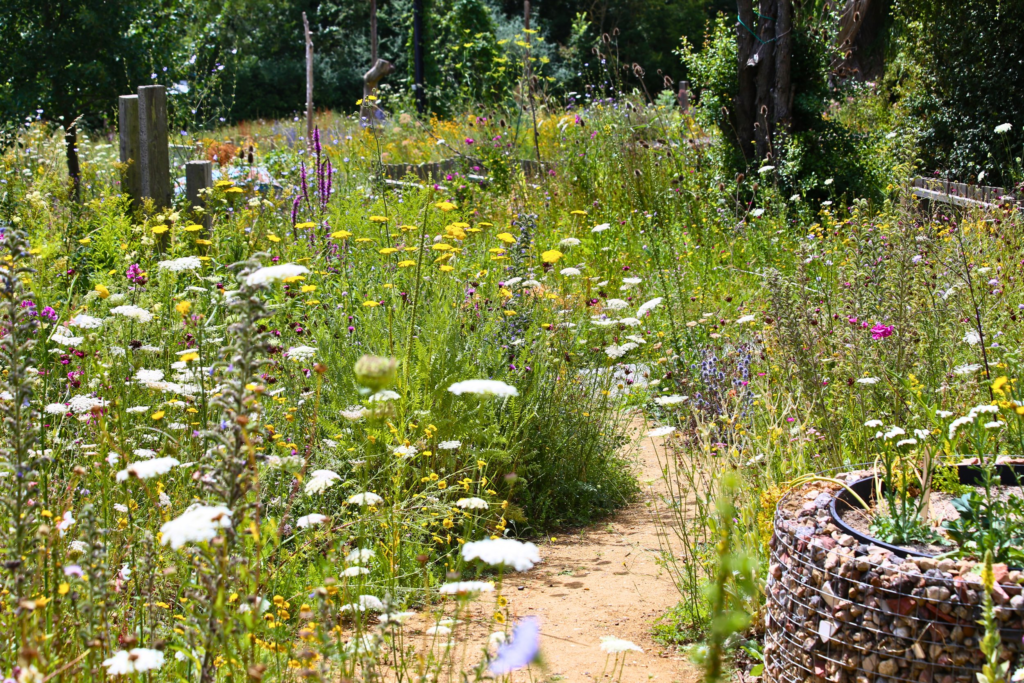
Creating Water Sources
Water is critical for wildlife, and there are many ways to incorporate it into your garden:
- Bird baths – Clean and refill regularly, adding a stone for insects to perch
- Small ponds – Even container ponds can support amphibians and aquatic insects
- Rain gardens – Capture runoff while creating moist microhabitats
- Puddling areas – Shallow depressions with damp soil attract butterflies
According to the U.S. Fish and Wildlife Service, even a small water feature can increase garden biodiversity by up to 50%.
Building Wildlife Shelters
Wildlife needs places to hide, rest, and escape predators:
- Brush piles – Stack fallen branches to create cover for small mammals and birds
- Rock piles – Provide basking spots for reptiles and hiding places for beneficial insects
- Log piles – Create decomposing wood habitat for fungi and invertebrates
- Dense shrubs – Offer protective cover for birds and small animals
These features don’t need to be unsightly. The art of wildlife gardening involves integrating these elements in aesthetically pleasing ways.
Installing Nesting Sites
Different species have different nesting requirements:
- Birdhouses – Select appropriate sizes and mounting heights for target species
- Bee hotels – Drill holes in blocks of untreated wood for native solitary bees
- Bat houses – Mount on poles or buildings at least 10-15 feet high
- Leaf litter – Allow fallen leaves to remain as nesting material and insect habitat
The U.S. Forest Service provides detailed specifications for constructing wildlife homes suitable for different species.
Supporting Specific Wildlife Groups
Attracting Pollinators
Pollinators are essential for ecosystem health and food production. The U.S. Department of Agriculture reports that pollinators are responsible for one out of every three bites of food we eat.
Top Plants for Different Pollinators
| Pollinator Type | Early Season | Mid Season | Late Season | Host Plants |
|---|---|---|---|---|
| Butterflies | Spring Beauty, Phlox | Milkweed, Coneflower | Aster, Goldenrod | Milkweed (Monarchs), Dill (Swallowtails) |
| Bees | Willow, Redbud | Bee Balm, Catmint | Sedum, Aster | N/A (need nesting sites) |
| Hummingbirds | Columbine, Coral Bells | Cardinal Flower, Bee Balm | Salvia, Trumpet Vine | N/A (need nesting materials) |
| Moths | Evening Primrose, Nicotiana | Phlox, Honeysuckle | Moonflower, Night-blooming Jasmine | Virginia Creeper, Wild Cherry |
To maximize pollinator attraction, plant in clumps rather than single specimens, and choose varieties with different flower shapes to accommodate different pollinator feeding structures.
Creating Bird Habitats
Birds provide natural pest control, seed dispersal, and endless enjoyment through their songs and activities. To attract a diversity of birds:
- Plant a variety of trees and shrubs that produce berries and seeds
- Include grasses and perennials that produce seed heads for winter food
- Allow some perennials to stand through winter rather than cutting them back
- Create brush piles for ground-feeding birds to forage
- Add nesting boxes appropriate for species in your region
The Cornell Lab of Ornithology offers an excellent resource called YardMap to help you design bird-friendly landscapes.
Supporting Beneficial Insects
Many insects are actually beneficial to your garden, serving as pollinators or predators of pest species. The U.S. Department of Agriculture Agricultural Research Service estimates that beneficial insects provide pest control services worth billions of dollars annually.
To encourage these helpful insects:
- Grow umbrella-shaped flowers like dill, fennel, and Queen Anne’s lace for tiny parasitic wasps
- Include ground covers to create habitat for ground beetles and other crawling predators
- Avoid pesticides that kill beneficial insects along with pests
- Leave some areas of bare soil for ground-nesting bees
- Incorporate “insect hotels” with various sized holes and crevices
Maintaining Your Wildlife Garden
Sustainable Maintenance Practices
Traditional garden maintenance often disrupts wildlife habitats. Consider these wildlife-friendly alternatives:
- Leave the leaves – Rake them into beds rather than removing them
- Reduce lawn areas – Replace with native plant communities
- Avoid chemical interventions – Use organic methods and tolerate some plant damage
- Practice “messy” gardening – Allow some areas to be less tidy for wildlife benefit
- Deadhead selectively – Leave some seed heads for birds and self-sowing
According to the National Park Service, postponing fall cleanup until spring gives many beneficial insects a chance to complete their life cycles.
Seasonal Considerations
Spring
- Install new native plants early in the season
- Add nesting materials like twigs, pet fur, and plant fibers for birds
- Clean and prepare bird baths and water features
- Start a pollinator-monitoring program to track garden visitors
Summer
- Keep water features filled during hot weather
- Deadhead some flowers to prolong blooming
- Document wildlife visitors through photography
- Harvest seeds from native plants for future propagation
Fall
- Leave seed heads standing for birds
- Reduce cleanup—leave stems, seed heads, and leaf litter
- Plant trees and shrubs while soil is still warm
- Collect and stratify native seeds for spring planting
Winter
- Add suet and seed feeders for winter birds
- Check bird and bat houses for repairs
- Plan next year’s wildlife garden additions
- Research native plant sales for spring purchases
Overcoming Common Challenges
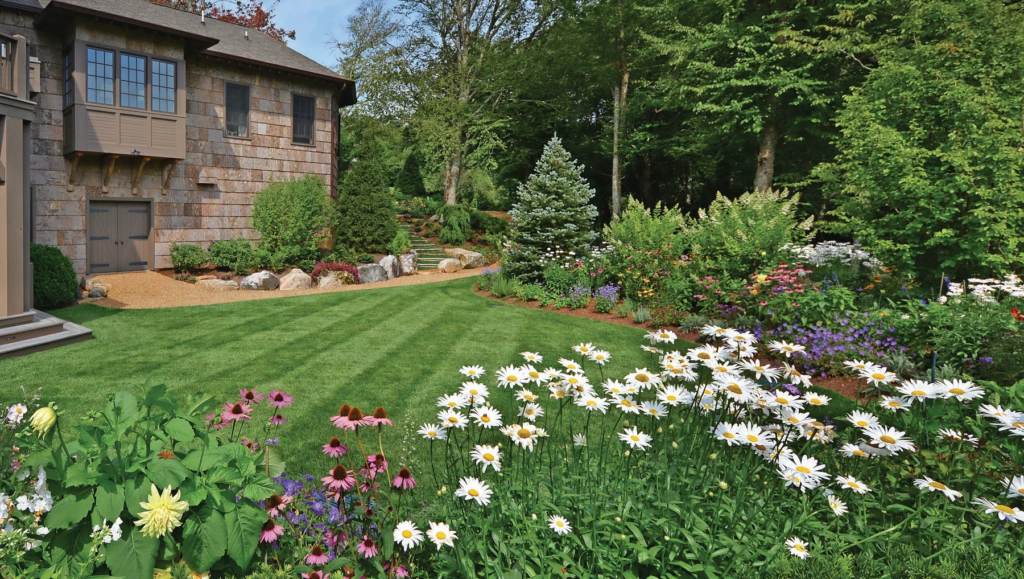
Balancing Aesthetics and Habitat Value
Many people worry that wildlife gardens look unkempt. However, you can create a beautiful wildlife garden by:
- Using defined edges and paths to create a sense of intentionality
- Installing decorative signage explaining the ecological purpose
- Incorporating wildlife features that double as art pieces
- Creating “frames” of more traditional plantings around wilder areas
- Focusing on high-quality, healthy plants rather than perfect appearances
The U.S. Botanic Garden offers demonstrations of beautiful, wildlife-supporting landscapes that can inspire your designs.
Managing Wildlife Conflicts
Not all wildlife interactions are welcome. To minimize conflicts:
- Secure compost bins to discourage raccoons and other scavengers
- Use hardware cloth beneath raised beds to deter burrowing animals
- Select deer-resistant plants in areas with high deer pressure
- Position bird feeders away from windows to prevent collisions
- Use physical barriers rather than chemical deterrents
If conflicts do arise, the U.S. Department of Agriculture’s Wildlife Damage Management program offers humane solutions for common wildlife issues.
Navigating HOA and Municipal Regulations
Some communities have restrictions that can impact wildlife gardening. To navigate these challenges:
- Review your HOA bylaws and municipal codes before planning
- Create a neat, intentional-looking border around naturalistic plantings
- Share information about the ecological benefits with neighbors and HOA boards
- Apply for official certification through programs like the National Wildlife Federation’s Garden for Wildlife
- Focus on high-quality, disease-free native plants rather than “wild” looking specimens
Many communities are updating their codes to support sustainability, so check with your local government for current regulations.
Getting Certified and Connected
Wildlife Garden Certification Programs
Several organizations offer certification for wildlife-friendly gardens:
- National Wildlife Federation’s Garden for Wildlife – The most widely recognized program
- Xerces Society’s Pollinator Habitat – Focused on insect conservation
- Monarch Watch’s Monarch Waystation – Specialized for monarch butterfly support
- Audubon’s Bird-Friendly Communities – Emphasizes habitat for birds
These programs provide guidelines, recognition, and in some cases, signage to display your commitment.
Joining Community Science Projects
Your wildlife garden can contribute valuable data to scientific research:
- Project FeederWatch – Monitor birds at feeders during winter
- Great Sunflower Project – Count bees visiting specific plants
- Monarch Watch – Tag monarchs during fall migration
- iNaturalist – Document all wildlife observations year-round
The U.S. Geological Survey coordinates many community science projects that rely on backyard observations.
Conclusion
Creating a wildlife-friendly garden is one of the most rewarding ways to connect with nature while making a tangible difference in conservation efforts. By providing food, water, shelter, and nesting sites through thoughtful plant selection and habitat features, you’re creating a living ecosystem that supports biodiversity right outside your door.
Remember that wildlife gardening is a journey, not a destination. Start small, observe closely, and let your garden evolve over time. Each season will bring new visitors and discoveries as your garden matures into a thriving wildlife haven.
Not only will you be supporting crucial ecosystem services like pollination and natural pest control, but you’ll also be creating a space of beauty and wonder that connects you more deeply to the natural rhythms of the world. Your garden can become a living demonstration of how humans and wildlife can coexist harmoniously, one backyard at a time.
For more in-depth information on creating wildlife habitats, visit the U.S. Fish and Wildlife Service’s Partners for Fish and Wildlife Program, which offers technical and financial assistance to landowners interested in restoring wildlife habitat.
Start today, and watch as your garden transforms into a vibrant sanctuary for wildlife and a source of endless discovery for you.
